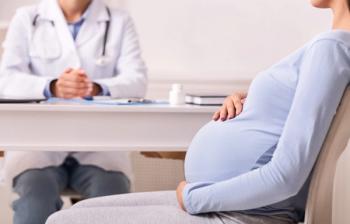
- Vol 38, Issue 4
- Volume 04
Comorbid PTSD: Update on the Role of Prazosin
Prazosin appears to be effective and perhaps the best medication for selected patients, including those with bipolar disorder.
BIPOLAR UPDATE
Irritable mood is a regular feature of PTSD. Triggers include events or thoughts related to the original trauma, which elicit an immediate adrenalized fight-or-flight response. Patients with PTSD will almost always
The best medication for PTSD-related sleep disturbances, and perhaps other symptoms as well, is prazosin, which is an α-1 adrenergic antagonist antihypertensive agent. There have been 9 randomized, placebo-controlled trials of prazosin for PTSD, 6 of which have reported positive results. Some of these study
However, the
This study made it clear that there are many patients who do not respond to prazosin and that research is needed to determine whether there are predictors of response.
Already we know that high blood pressure, which is a common medical comorbidity in PTSD, is a predictor.6 Raskind has termed these patients the “adrenergic subtype” of PTSD. In their 2013 study,3 which reported positive results overall, the authors found that patients with a baseline systolic blood pressure of 110 mm Hg or less did not respond to prazosin better than to placebo.6 Benefits rose sharply with each increase of baseline systolic blood pressure of 10 mm Hg.
Another predictor of poor response could be active drinking in patients who have an alcohol use disorder (AUD) and are actively drinking. Results of a
In an 8-week study comparing prazosin, hydroxyzine, and placebo in 100 patients with
In conclusion, prazosin appears to be effective and perhaps the best medication for properly selected patients with PTSD, especially for their sleep disturbances. It might also address daytime symptoms, including irritability. Prazosin generally does not interact with medications for bipolar disorder. It is not particularly sedating, so another medication is often
The effective doses of prazosin (after slow titration over several weeks) in the studies supporting its use clustered around a mean of 15 mg at bedtime for men and about half that for women. However, patient sensitivity to the medication is
Dr Osser is associate professor of psychiatry, Harvard Medical School, and colead psychiatrist at the US Department of Veterans Affairs, National Telemental Health Center, Bipolar Disorders Telehealth Program, Brockton, Massachusetts. He also serves as a member of the Editorial Board of Psychiatric TimesTM. Dr Osser has no financial disclosures regarding this article.
References
1. Bajor LA, Ticlea AN, Osser DN.
2. Germain A, Richardson R, Moul DE, et al.
3. Raskind MA, Peterson K, Williams T, et al. A trial of prazosin for combat trauma PTSD with nightmares in active-duty soldiers returned from Iraq and Afghanistan. Am J Psychiatry. 2013;170(9):1003-1010.
4. Ahmadpanah M, Sabzeiee P, Hosseini SM, et al. Comparing the effect of prazosin and hydroxyzine on sleep quality in patients suffering from posttraumatic stress disorder. Neuropsychobiology. 2014;69(4)235-242.
5. Raskind MA, Peskind ER, Chow B, et al.
6. Raskind MA, Millard SP, Petrie EC, et al. Higher pretreatment blood pressure is associated with greater posttraumatic stress disorder symptom reduction in soldiers treated with prazosin. Biol Psychiatry. 2016;80(10):736-742.
7. Petrakis IL, Desai N, Gueorguieva R, et al.
8. McCall WV, Pillai A, Case D, et al. A pilot, randomized clinical trial of bedtime doses of prazosin versus placebo in suicidal posttraumatic stress disorder patients with nightmares. J Clin Psychopharmacol. 2018;38(6):618-621.
9. Koola MM, Varghese SP, Fawcett JA. High-dose prazosin for the treatment of post-traumatic stress disorder. Ther Adv Psychopharmacol. 2014;4(1):43-47. ❒
Articles in this issue
over 4 years ago
Sedation: The Ups and Downs of a Side Effectover 4 years ago
Addressing Obesity in Patients Taking Antipsychoticsover 4 years ago
Finding Solutions While Managing Problemsalmost 5 years ago
Race, Ethnicity, and Chronic Painalmost 5 years ago
Exploring the Link Between Neuroticism-Depression and College Drinkingalmost 5 years ago
Phenomenology, Power, Polarization, and Psychosisalmost 5 years ago
In Memoriam: Eulogies for Beloved PsychiatristsNewsletter
Receive trusted psychiatric news, expert analysis, and clinical insights — subscribe today to support your practice and your patients.

















